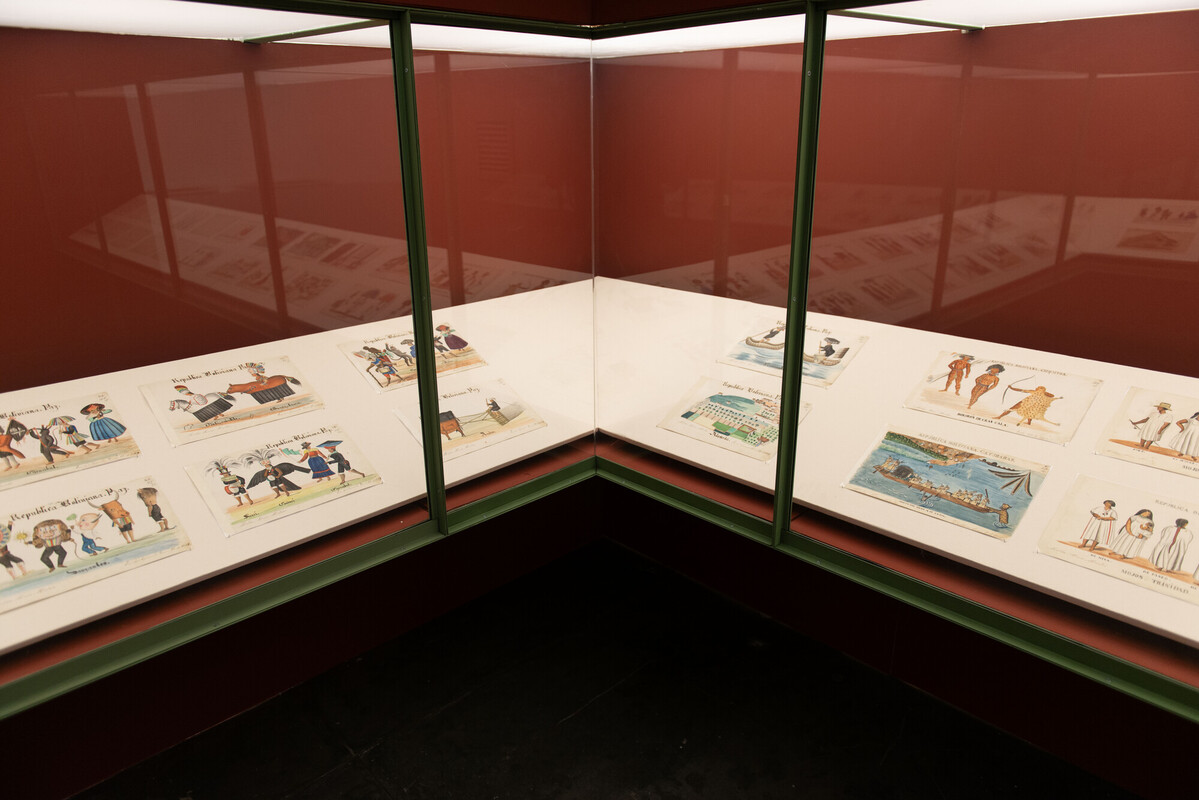
Melchor María Mercado
Although it was first shown almost a century later in 1991, the Álbum de paisajes, tipos humanos y costumbres [Album of landscapes, human types and costumes] was produced between 1841 and 1869, in the early days of the Republic of Bolivia. Going against the grain of traditional historiography and the prevailing neoclassical taste, Melchor María Mercado created other ways of “narrating the nation.” The hundreds of watercolours that constitute the work trace a genealogy of their own through the different human groups, customs, and regions of the country, in which the Indigenousindigenous populations and the cholas play an undeniable leading role. However, at the same time as he captures Bolivian culture, architecture and nature, the artist also points out the fragility of political power (which he experienced first-hand) and satirizes the corruption of the colonial elites.
In this way, in addition to an early attempt to unfold an Andean memory and episteme, the fractures and ambivalences that marked the period are also discernible: the marginalization of certain identities or social classes and a persistent colonial domination which was revealed as the other side of the celebrated triumph of the market and democracy. There is a particular way of approaching space and time in Álbum. Against the single, linear vision of written history, a sequential and dialogical format is proposed, where each picture is – in itself and in relation to others – a discursive sparkle.
The sociologist Silvia Rivera Cusicanqui, who studied the practice of her compatriot in detail, spoke of the homeland as a handful of beloved and contradictory images. Thus, far from prefiguring what would later be instituted as a map, Melchor María Mercado’s work suggests zones of encounter and conflict in an allegory between the lived and the signified.
beatriz martínez hijazo
translated from Spanish by ana laura borro
Melchor María Mercado (Sucre, Bolivia, 1816-1871) was an artist, educator, and explorer. Known for his expertise in teaching and his passion for the natural sciences, Mercado traveled extensively throughout Bolivia, documenting the country’s landscapes, people, and customs in his Album of Landscapes – Human Types, and Customs of Bolivia, whose original pages are preserved in the Archivo y Biblioteca Nacionales de Bolivia, published in 1991.

 Português
Português